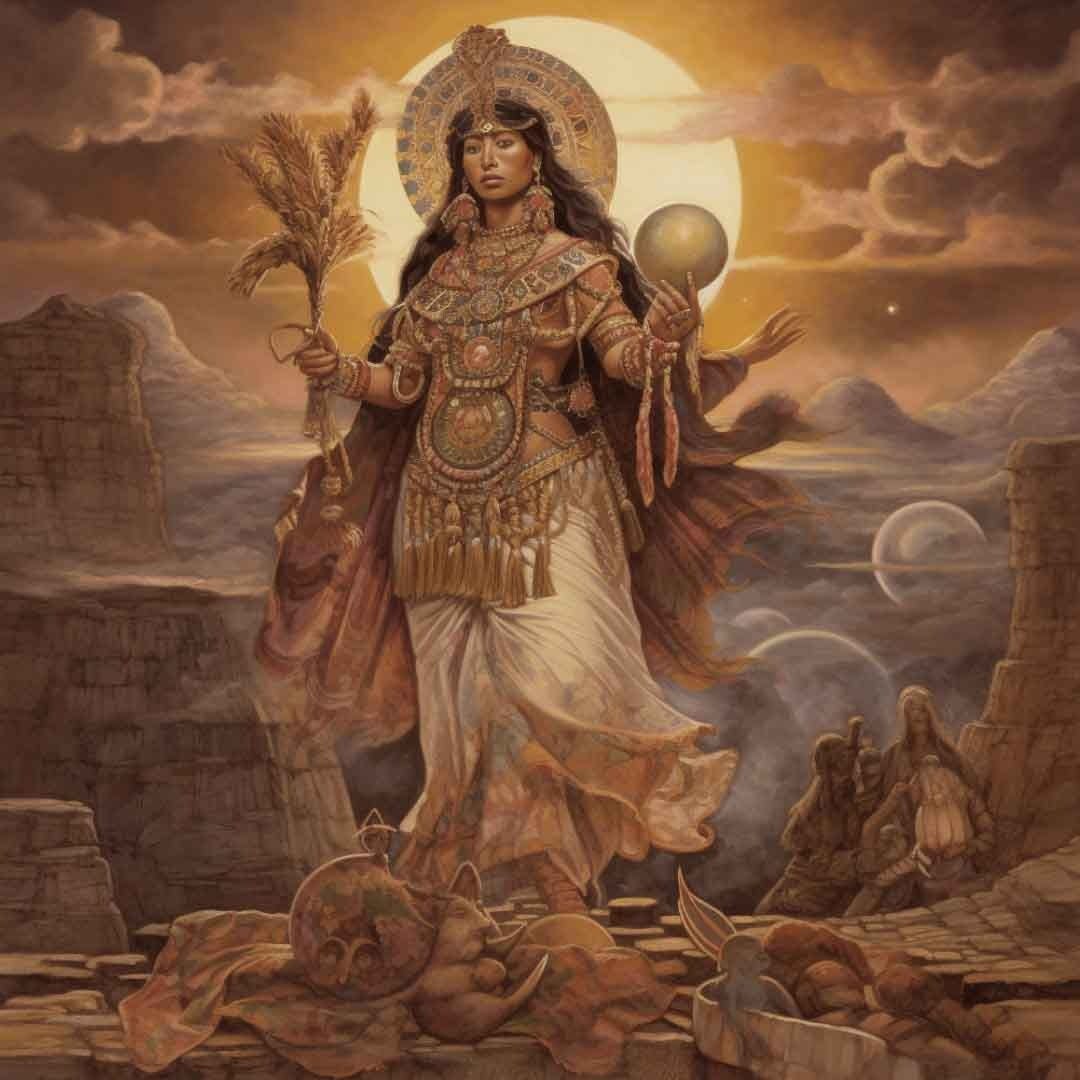The Moon in the Inca Empire
The moon is an interesting topic to investigate in the context of the Inca Empire, because it allows us to better understand their culture, beliefs and knowledge.
The Incas believed in numerous gods, among them, Mama Quilla, known as “Mother Moon”, who had a privileged place in the Andean cosmovision.
Mama Quilla was the protector of women, and ceremonies were held in her honor where women danced and begged for her protection during pregnancies and births.
The veneration of Mama Quilla was manifested through rituals and ceremonies full of symbolism, seeking to establish direct communication with the lunar deity to obtain her guidance and protection.
Offerings made to Mama Quilla included animals such as llamas and guinea pigs, as well as gold and silver objects. They also offered food, such as corn and other agricultural products, in an act of gratitude and devotion.
In Inca astrology, Mama Quilla played a central role and it was believed that her impact affected people's destiny and character. Her cult was so important that temples were built in her honor and sacrifices and offerings were practiced.
For the Incas, lunar eclipses represented moments of cosmic conflict. According to National Geographic, these events were interpreted as the attack of an evil animal, possibly a snake, that threatened Mama Quilla, causing its temporary darkening. To expel these creatures and protect their goddess, the Incas made as much noise as possible during eclipses and restored peace to the night sky.
This mythological interpretation reflected their deep respect for the moon as a deity and their attempt to explain complex astronomical phenomena through symbolic stories.
Photo credit: Pinterest





I really enjoyed this, Elizabeth! Thank you for sharing the Incan history of the moon!
Fascinating Elizabeth.
Do you know if the Incas carry out Capacha (child sacrifices) for Mama Quilla, as they did for other gods and rulers?
The moon features prominently in our North American indigenous cultures. The moon is seen as a creation of God, not a god per se and often appears on Totem Poles and other Totem art.